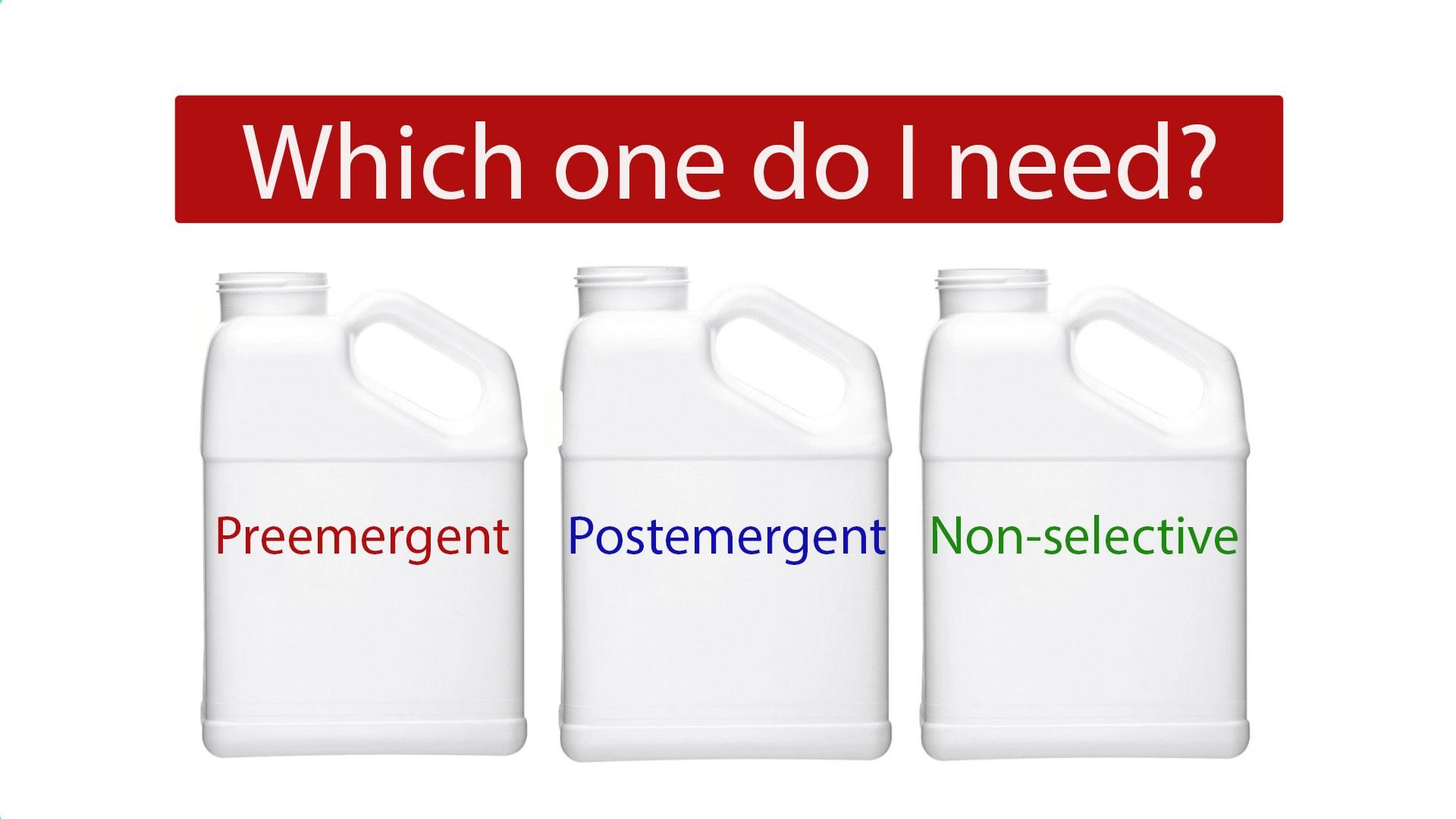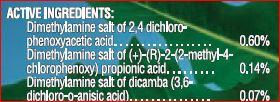Herbicides have been used to control lawn weeds since the 1950s. But the potential risks to people, animals, and the environment should cause people to reconsider their use as part of routine lawn care. Concentrating on proper lawn care practices can reduce the need for herbicide use. Herbicides should be used as a last resort and not a substitute for good lawn care.
Critical herbicide information and cautions
- The first step is to identify the weed. That will help to determine the best herbicide for the job. See Weed Identification Photos
- The pesticide label is the law. Read and follow the label directions. The information provided is for the safest and most effective use of the product. Learn more about herbicides for weed control from the National Pesticide Information Center.
- Select ready-ready-to-use (RTU) products to spot treat weeds eliminating the need for mixing and using a sprayer. If you choose a concentrate product dedicate a sprayer for herbicide use only.
- Weed and feed products are not recommended because they:
- are formulated to treat the entire yard
- are applied in spring (we recommend that most lawn fertilizers be applied in fall)
- can contribute to overfertilizing your lawn
- Always read and follow the label directions of any herbicide product you are using!
- Keep herbicides in their original container and purchase the amount needed for only one season.
- Herbicides work best on young weeds and when the weeds are actively growing. Do not treat drought-stressed lawns.
- Late summer into fall is a good time to treat difficult weeds like creeping Charlie. Perennial plants move the foods they make, along with what is sprayed onto their leaves, down to their root system as they prepare to go dormant for the winter.
The problems with herbicide use
- During certain weather conditions, volatility or drift can occur causing damage to non-target plants.
- Some herbicides, such as Dicamba, may damage trees and shrubs when the active ingredient is taken up by roots growing in the treated lawn.
- Herbicides, especially dry formulations, can wash off treated areas and injure downslope plants.
- Herbicide can be accidentally tracked into homes by people and pets. Synthetic herbicides are broken down by the sun, moisture, high temperature, and soil microorganisms. Indoors, the active ingredient can persist, increasing exposure to people and pets.
- The relative effectiveness of herbicides is subject to many factors outside our control - temperature, rainfall, soil conditions, etc. Even when we fully follow label directions, the resulting level of weed control may be disappointing.
- Weeds develop resistance to herbicides making them less effective.
 English
English العربية
العربية Български
Български 简体中文
简体中文 繁體中文
繁體中文 Hrvatski
Hrvatski Čeština
Čeština Dansk
Dansk Nederlands
Nederlands Suomi
Suomi Français
Français Deutsch
Deutsch Ελληνικά
Ελληνικά हिन्दी
हिन्दी Italiano
Italiano 日本語
日本語 한국어
한국어 Norsk bokmål
Norsk bokmål Polski
Polski Português
Português Română
Română Русский
Русский Español
Español Svenska
Svenska Català
Català Filipino
Filipino עִבְרִית
עִבְרִית Bahasa Indonesia
Bahasa Indonesia Latviešu valoda
Latviešu valoda Lietuvių kalba
Lietuvių kalba Српски језик
Српски језик Slovenčina
Slovenčina Slovenščina
Slovenščina Українська
Українська Tiếng Việt
Tiếng Việt Shqip
Shqip Eesti
Eesti Galego
Galego Magyar
Magyar Maltese
Maltese ไทย
ไทย Türkçe
Türkçe فارسی
فارسی Afrikaans
Afrikaans Bahasa Melayu
Bahasa Melayu Kiswahili
Kiswahili Gaeilge
Gaeilge Cymraeg
Cymraeg Беларуская мова
Беларуская мова Íslenska
Íslenska Македонски јазик
Македонски јазик יידיש
יידיש Հայերեն
Հայերեն Azərbaycan dili
Azərbaycan dili Euskara
Euskara ქართული
ქართული Kreyol ayisyen
Kreyol ayisyen اردو
اردو বাংলা
বাংলা Bosanski
Bosanski Cebuano
Cebuano Esperanto
Esperanto ગુજરાતી
ગુજરાતી Harshen Hausa
Harshen Hausa Hmong
Hmong Igbo
Igbo Basa Jawa
Basa Jawa ಕನ್ನಡ
ಕನ್ನಡ ភាសាខ្មែរ
ភាសាខ្មែរ ພາສາລາວ
ພາສາລາວ Latin
Latin Te Reo Māori
Te Reo Māori मराठी
मराठी Монгол
Монгол नेपाली
नेपाली ਪੰਜਾਬੀ
ਪੰਜਾਬੀ Afsoomaali
Afsoomaali தமிழ்
தமிழ் తెలుగు
తెలుగు Yorùbá
Yorùbá Zulu
Zulu ဗမာစာ
ဗမာစာ Chichewa
Chichewa Қазақ тілі
Қазақ тілі Malagasy
Malagasy മലയാളം
മലയാളം සිංහල
සිංහල Sesotho
Sesotho Basa Sunda
Basa Sunda Тоҷикӣ
Тоҷикӣ O‘zbekcha
O‘zbekcha አማርኛ
አማርኛ Corsu
Corsu Ōlelo Hawaiʻi
Ōlelo Hawaiʻi كوردی
كوردی Кыргызча
Кыргызча Lëtzebuergesch
Lëtzebuergesch پښتو
پښتو Samoan
Samoan Gàidhlig
Gàidhlig Shona
Shona سنڌي
سنڌي Frysk
Frysk isiXhosa
isiXhosa


